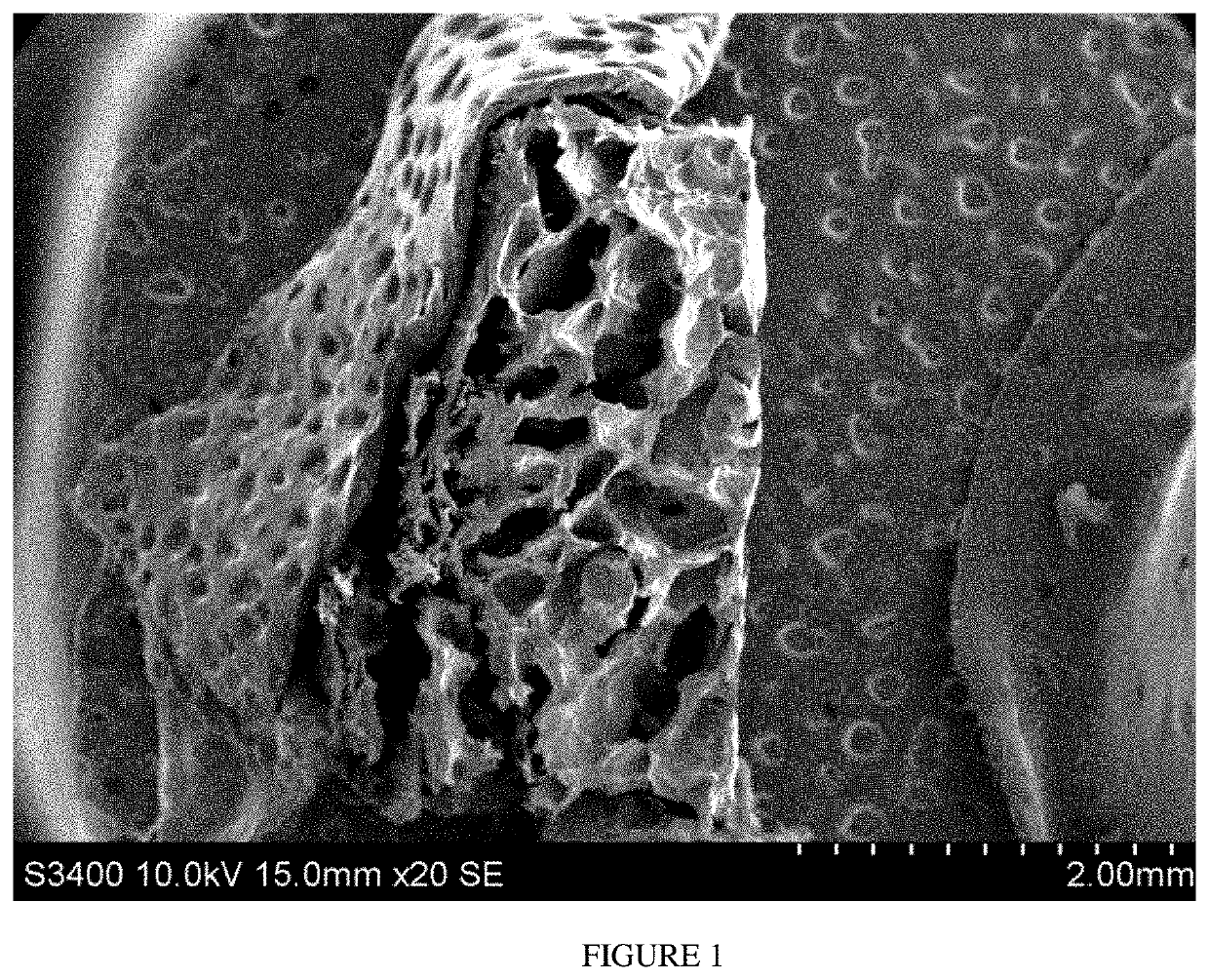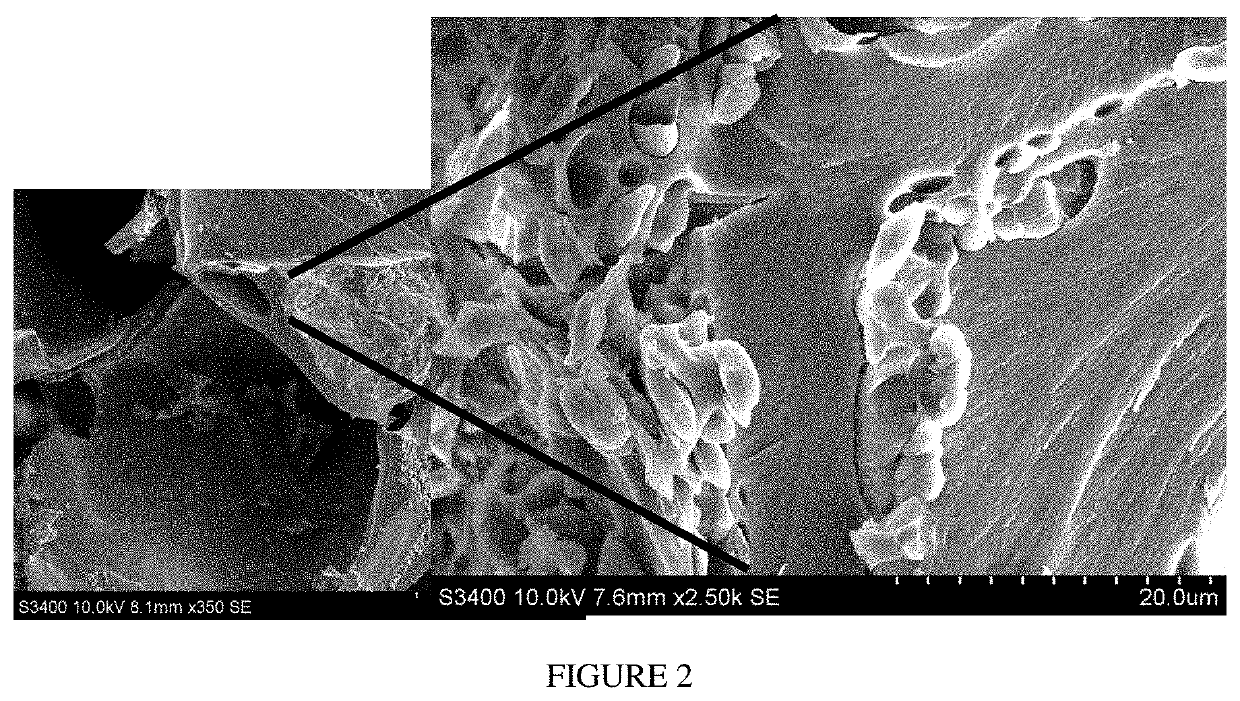Methods and compositions for achieving hemostasis and stable blood clot formation
a technology of hemostasis and blood clot formation, applied in the field of methods and compositions for achieving hemostasis and blood coagulation, can solve the problems of significant morbidity, current available approaches have limitations in effectiveness, safety, applicability and ease of use, and tissue sealants are not hemostats per se, etc., to achieve rapid action, promote coagulation, and produce hemostasis
- Summary
- Abstract
- Description
- Claims
- Application Information
AI Technical Summary
Benefits of technology
Problems solved by technology
Method used
Image
Examples
example 1
Making an Exemplary Acrylated Chitosan Composition
[0307]This example describes a method for making an acrylated chitosan for use in creating a hemostatic composition.
[0308]An exemplary acrylated chitosan was prepared as follows:
Step 1—Preparation of a Chitosan Intermediate
[0309]4.0 g of raw chitosan (Mw=162 kDa, PDI=2.3, DDA=79%) starting material was dissolved in 200 g of 1% (v / v) acetic acid solution for 30 minutes at 25° C. to produce a mixture. The mixture was then heated to 100° C. and held at this temperature for 2 hours.
Step 2—Preparation of the Acrylated Chitosan Intermediate
[0310]The mixture comprising the chitosan intermediate was then cooled to 50° C. Thereafter 5.3 g of acrylic acid was added and the mixture was then heated to 100° C. and held at this temperature for 60 minutes. The reaction was then cooled to 28° C. and then quenched by the addition of NaOH until a final pH value of 12.4 was achieved.
Step 3—Preparation of the Acrylated Chitosan Composition
[0311]The mixt...
example 2
Making an Exemplary Oxidized Dextran Composition
[0313]This example describes a method for making an oxidized dextran for use in creating a hemostatic composition.
[0314]An exemplary oxidized dextran was prepared as follows:
Step 1—Preparation of the Oxidized Dextran Intermediate
[0315]A dextran solution was prepared by dissolving 5.0 g of raw dextran starting material (Mw=129 kDa, PDI=4.58) in 400 g of distilled water for 30 minutes at 25° C. Thereafter a sodium periodate solution was prepared by dissolving 3.28 g of sodium periodate in 50 g of distilled water. The sodium periodate solution was then added to the dextran solution and the resulting mixture was stirred for 24 hours.
Step 2—Preparation of the Oxidized Dextran Composition
[0316]The mixture comprising the oxidized dextran intermediate was then purified by dialysis for 8 hours in order to remove salts and low molecular weight components from the mixture. The purified oxidized dextran was recovered by precipitation from ethanol ...
example 3
Making an Exemplary Hemostatic Composition
[0319]This example describes a method for making a hemostatic composition for use in reducing / stopping bleeding at a tissue lesion.
[0320]An exemplary hemostatic composition was prepared as follows:
[0321]The acrylated chitosan of Example 1 and oxidized dextran of Example 2 were each solubilized into a buffered saline solution to give a final concentration of 7.5% (w / w) and 7.5% (w / w), respectively. Equal amounts of the aqueous solution of the oxidized dextran provided in Example 2 (concentration: 7.5% w / w) and the aqueous solution of acrylated chitosan provided in Example 1 (concentration: 7.5% w / w) were loaded in a dual barrel syringe. A mixer was attached to the top of the dual barrel syringe. The two solutions were then passed through the mixer simultaneously. The hydrogel was observed to form instantaneously at the tip of the mixer. The combined solution was further aerosolized under pressure.
[0322]The burst strength of the acrylated chit...
PUM
| Property | Measurement | Unit |
|---|---|---|
| PDI | aaaaa | aaaaa |
| PDI | aaaaa | aaaaa |
| PDI | aaaaa | aaaaa |
Abstract
Description
Claims
Application Information
 Login to View More
Login to View More - R&D
- Intellectual Property
- Life Sciences
- Materials
- Tech Scout
- Unparalleled Data Quality
- Higher Quality Content
- 60% Fewer Hallucinations
Browse by: Latest US Patents, China's latest patents, Technical Efficacy Thesaurus, Application Domain, Technology Topic, Popular Technical Reports.
© 2025 PatSnap. All rights reserved.Legal|Privacy policy|Modern Slavery Act Transparency Statement|Sitemap|About US| Contact US: help@patsnap.com



